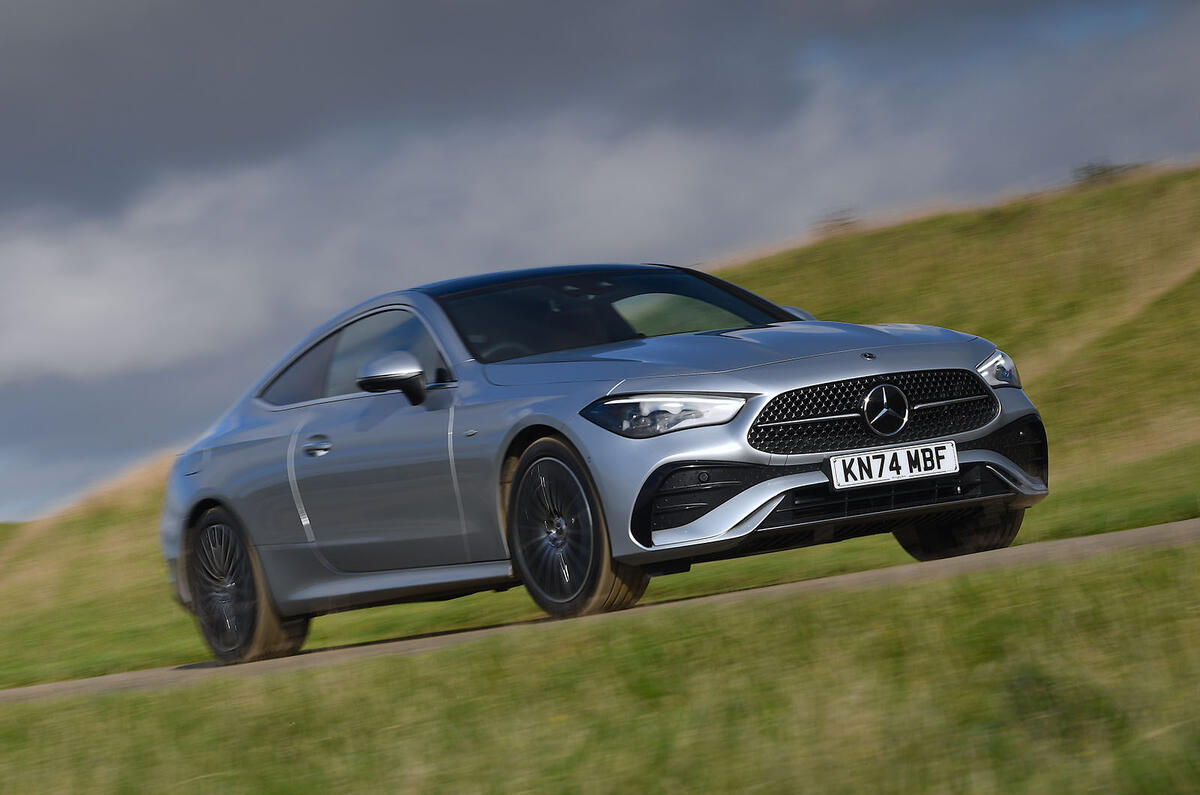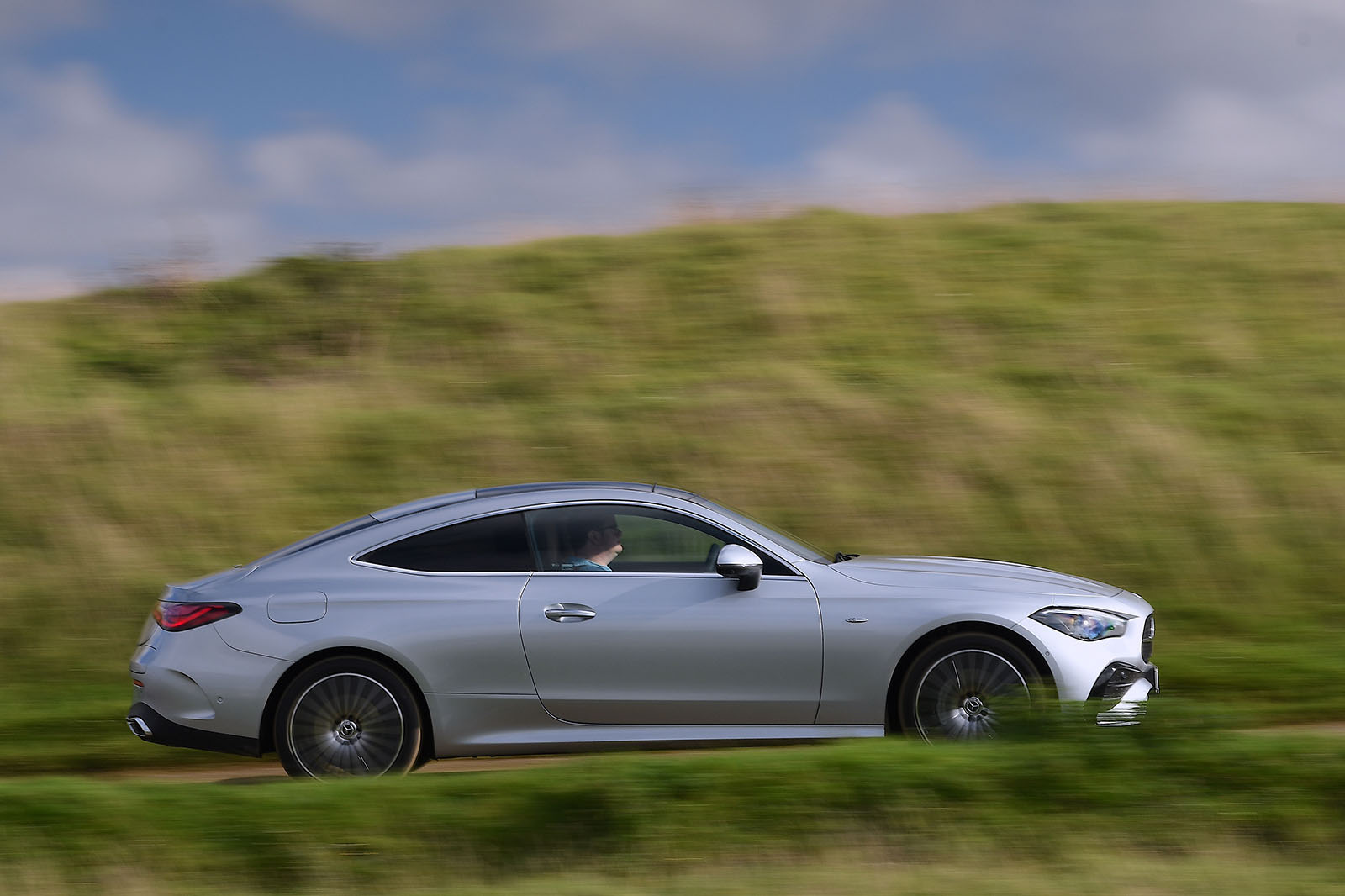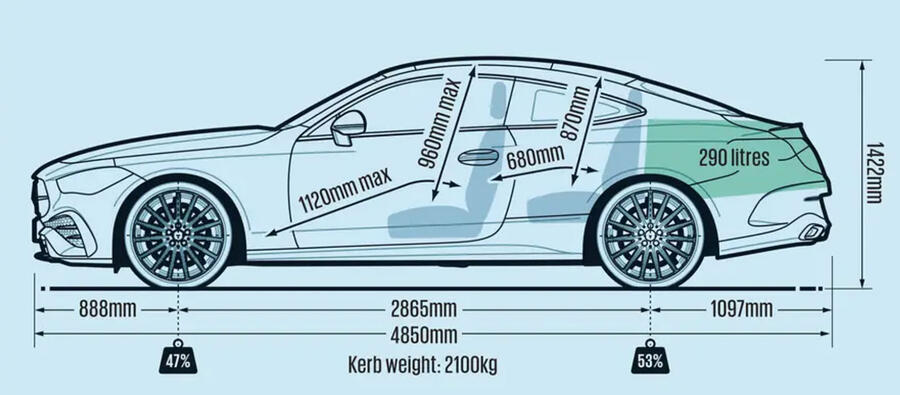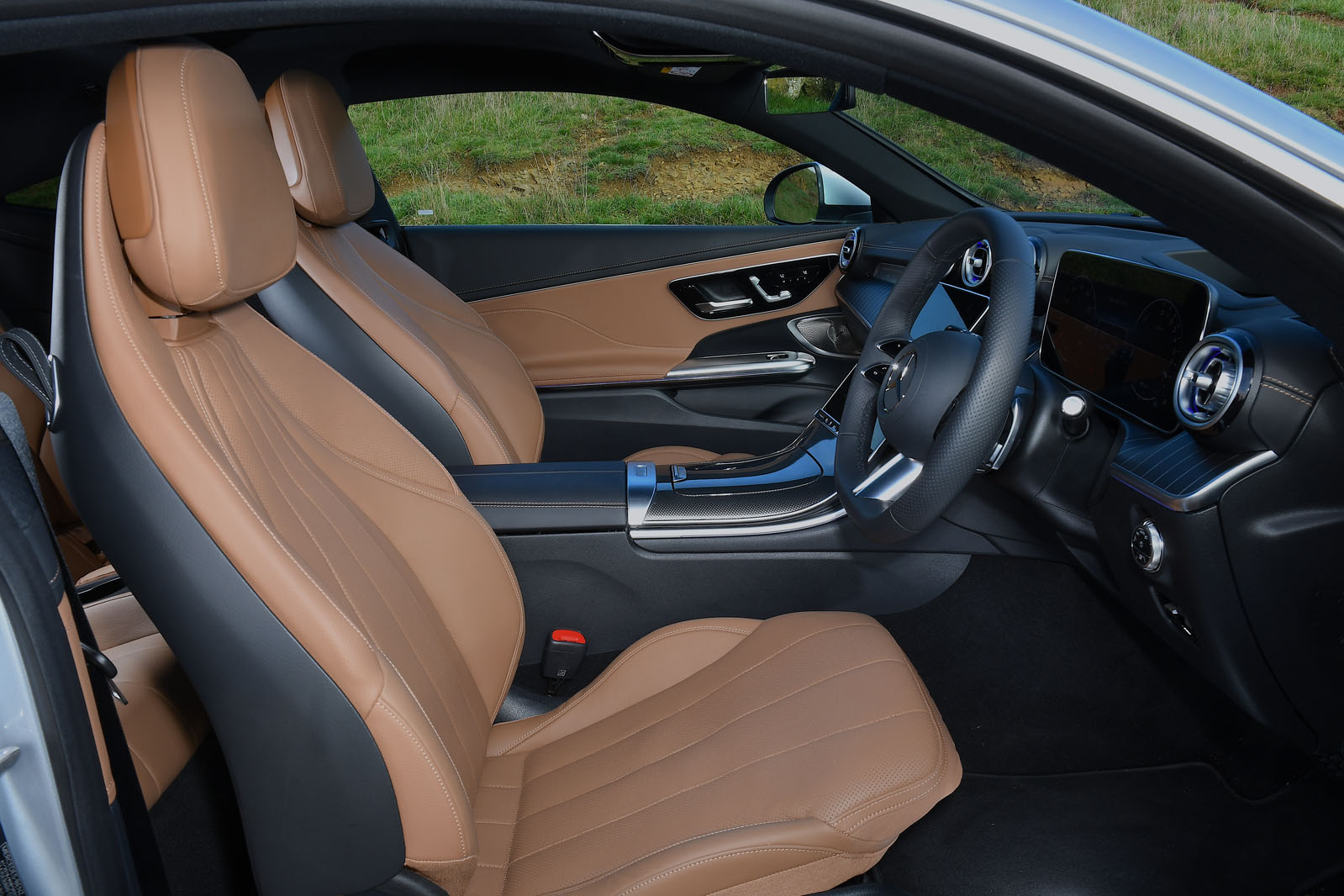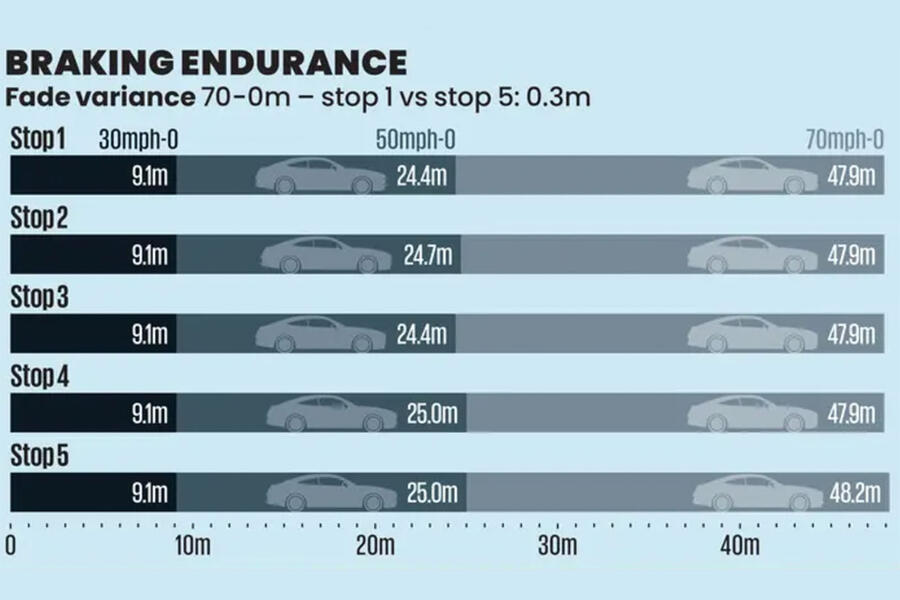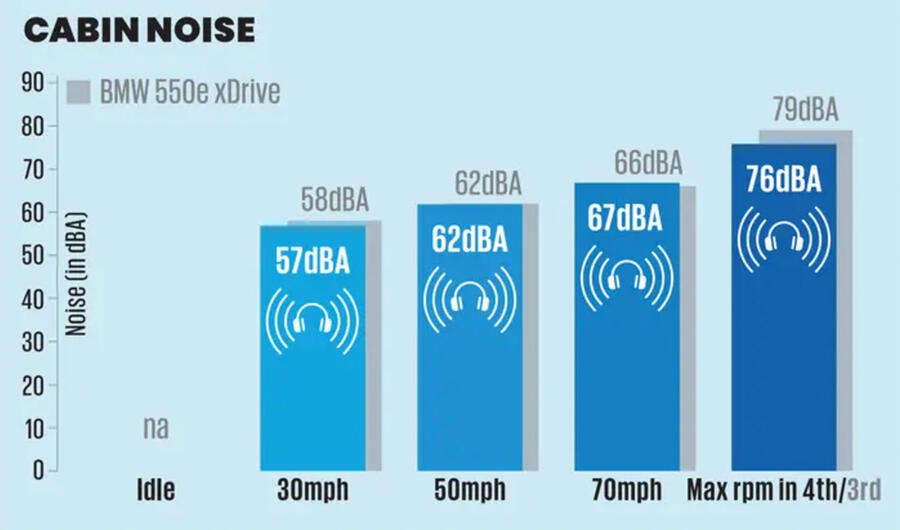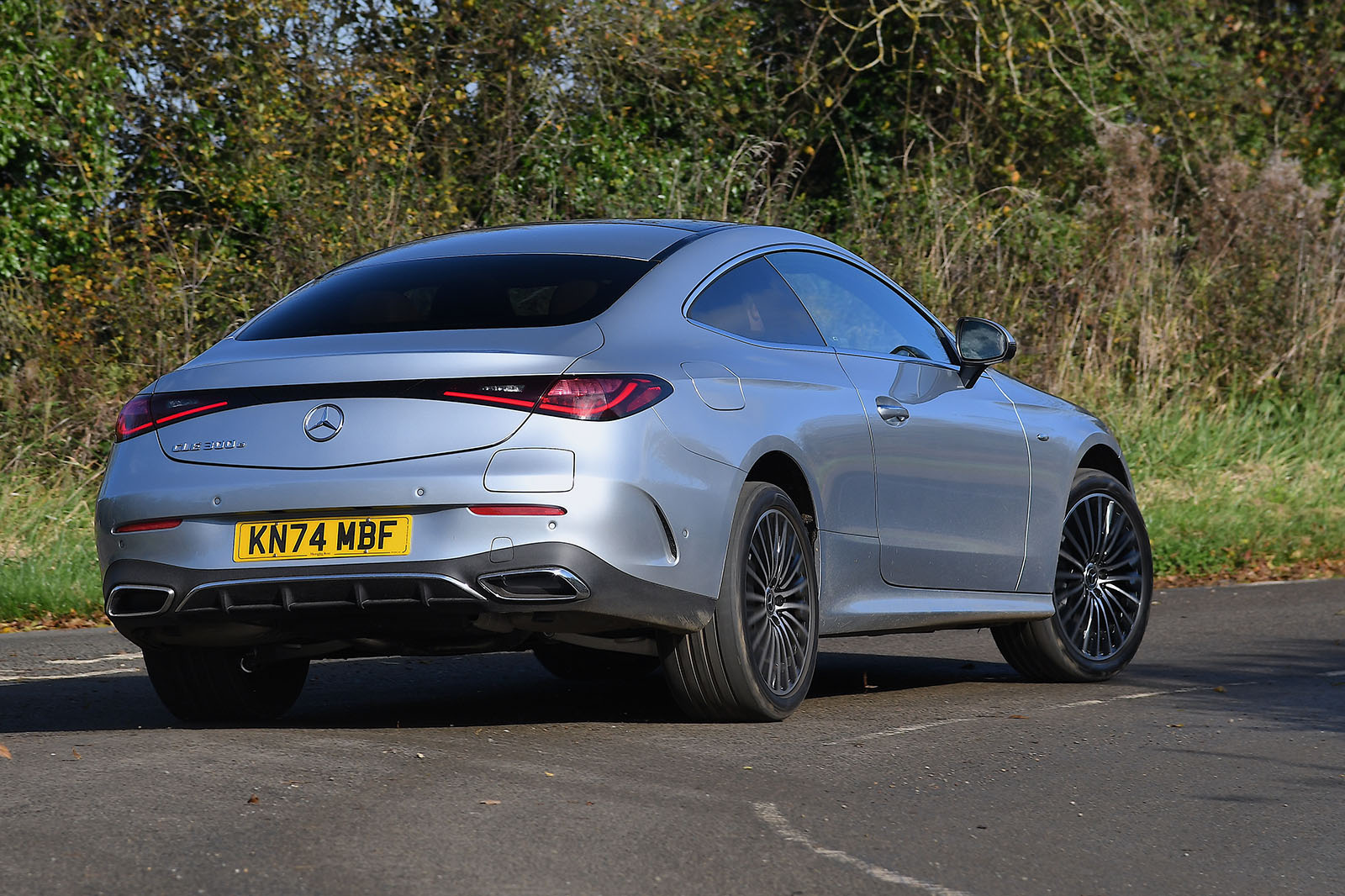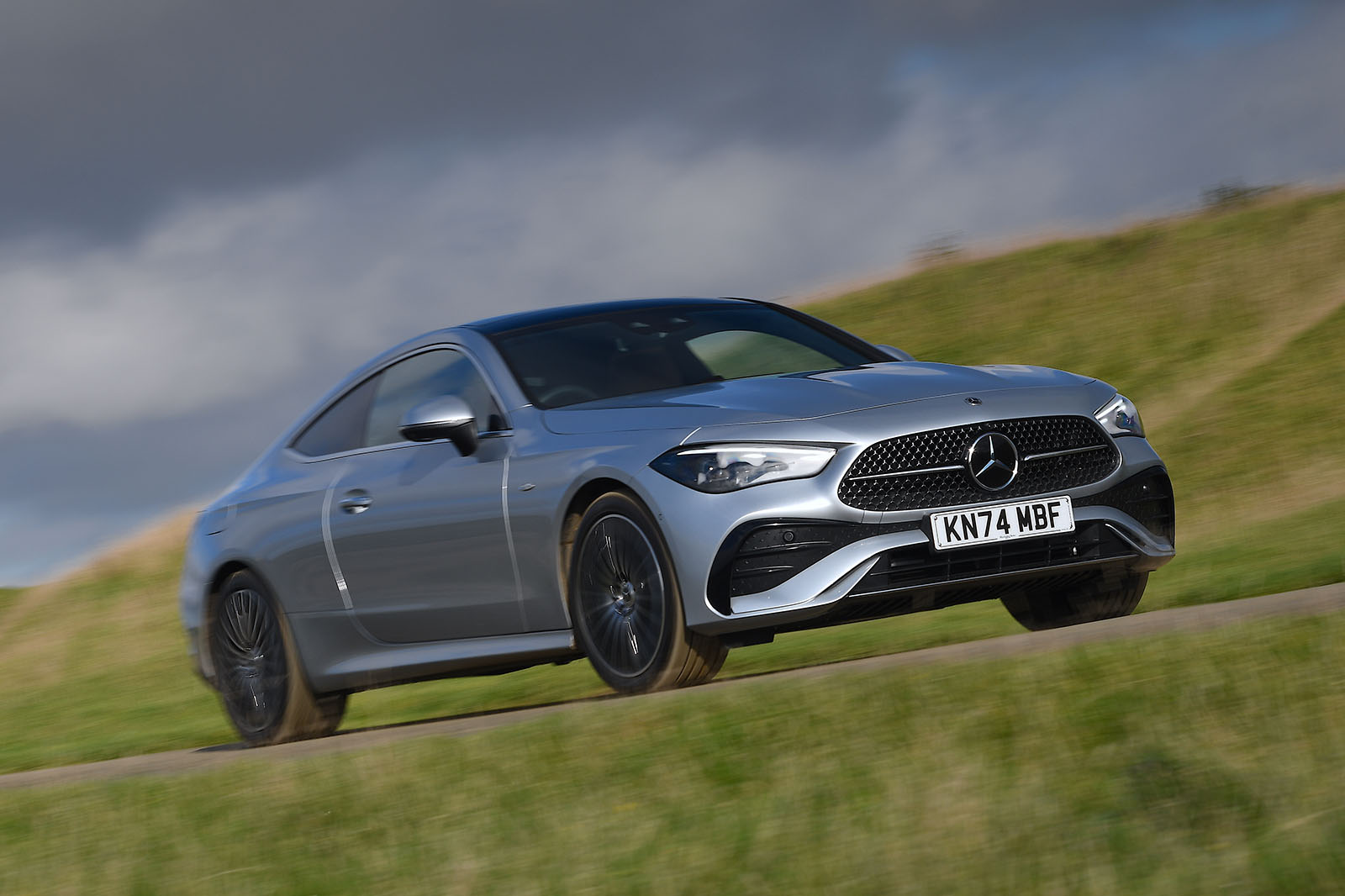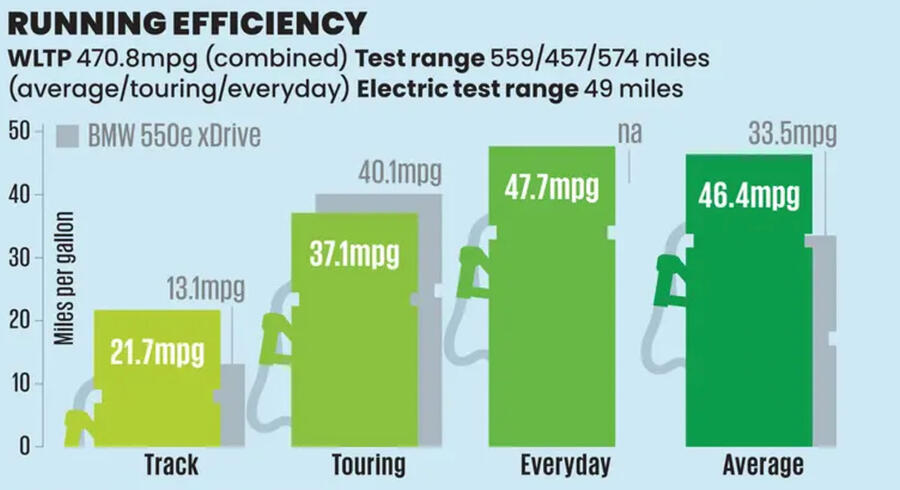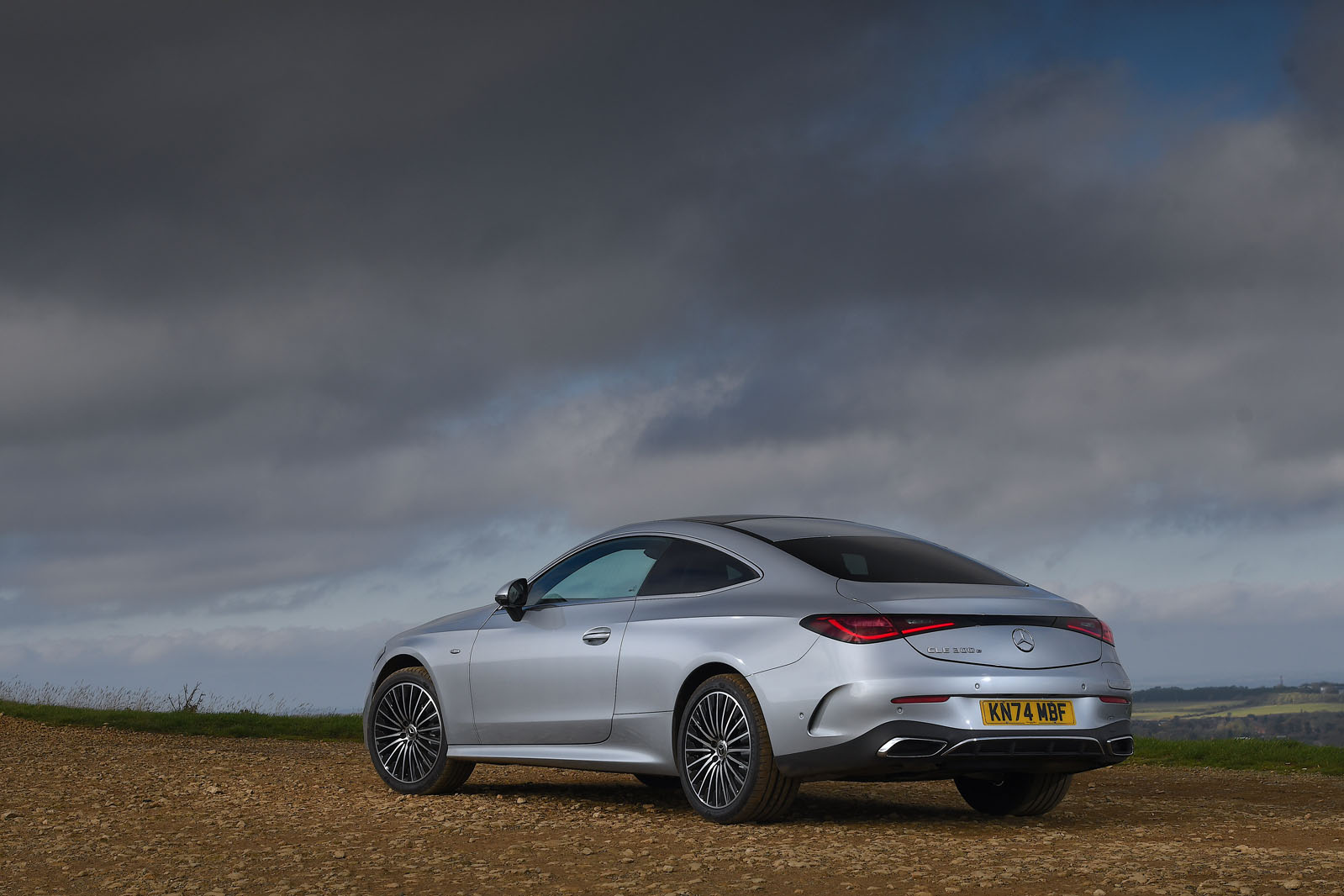It will take upgrading C-Class owners only seconds to recognise the ‘squircle’-style air vents and rounded transmission tunnel console of their old saloon here. The CLE’s cabin layout, specification and finish are very much, and rather apparently, C-Class-derived. That’s perhaps marginally more likely to disappoint those giving up an old E-Class Coupe for it than a C-Class Coupe, although neither very much.
This car’s perceived quality – the solidity and heft of its fixings and switches when they move, and the pervading look and feel of its various mouldings and materials – is certainly high enough to escape particular criticism. There’s the usual sense of gloss and glitz to the trims and materials chosen.
Our Premium Plus test car came with an attractive combination of ‘aluminium lines’ dashboard decor (lower trims get a more ordinary wood-effect trim) and Tonka Brown upholstery, which certainly lifted its ambience. However, the car’s part-synthetic leather lacks a little softness to the touch and, as has been the case with mid-tier Mercedes in recent years, the wider interior doesn’t go above and beyond class standards for material fit and finish. It should meet most people’s expectations, without setting new standards for richness or luxury aura.
The driving position is of medium hip height and the front seats offer plenty of adjustability for longer-legged drivers and reasonable, though not exceptional, comfort and support. The digital instruments are clear and very widely configurable.
While the steering wheel’s spoke-mounted controls for them, and those of the multimedia system itself, are easy to brush by mistake, they’re welcome as an alternative to so much more hands-off prodding and swiping at the central screen.
Second-row space is a little disappointing in that it’s only about typical for a mid-sized coupe (the CLE was within 20mm for both head room and leg room of the Lexus RC F we tested recently, itself effectively a 10-year-old car). The seats are usable by smaller adults and growing kids, but taller passengers won’t want to travel there for more than a short journey.
Impacted by that underfloor battery, boot volume is cut from 420- to 290 litres – and loading depth is affected most obviously. The CLE 300e’s boot floor is at least flat and the folding rear seatbacks offer through-loading potential, but a loading height of 350mm at its maximum could make carrying some bulkier loads difficult.
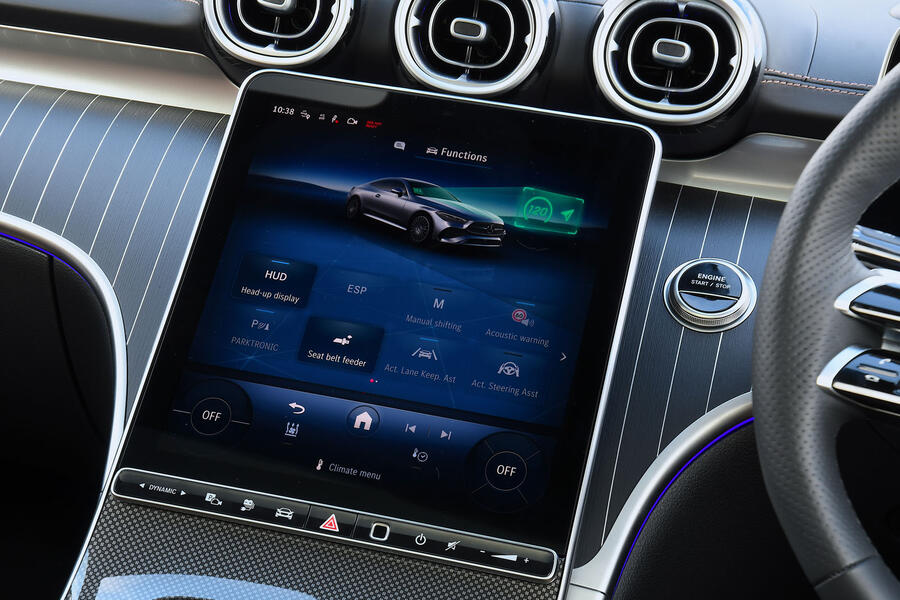
Multimedia
The CLE 300e omits Mercedes’ lowest-level derivative trim, being available from AMG Line Premium trim and upwards, so it gets an 11.9in portrait-oriented main infotainment screen as standard, which comes with full wireless smartphone integration and 360deg parking cameras.
Upgrade to the Premium Plus trim of our test car and you will get a colour head-up display and Burmester surround-sound premium audio as well, in addition to augmented reality directions for the navigation system. Since Mercedes’ AR navigation displays directions in slightly distracting fashion on the infotainment screen itself, taking over the display where you might simply be looking for a conventional turn instruction, our testers don’t particularly rate it.
The main MBUX multimedia system is much more recommendable generally, though. It has a physical cursor controller on the left-hand spoke of the steering wheel, so you needn’t prod at the screen much if you simply prefer not to; it has particularly accessible ‘zero layer’ quick-reference navigability; and it displays useful shortcut icons (for toggling Apple CarPlay, for instance, or disabling the speed limit reminder function) permanently around the periphery of the screen.
Our CLE had a Burmester 3D surround-sound premium audio system fitted, which includes speakers integrated into the seats at headrest height, supposedly to enhance the ‘spatial audio’ properties of the Dolby Atmos stereo. The system seemed capable enough and well suited to the car, but it didn’t particularly impress our testers.


